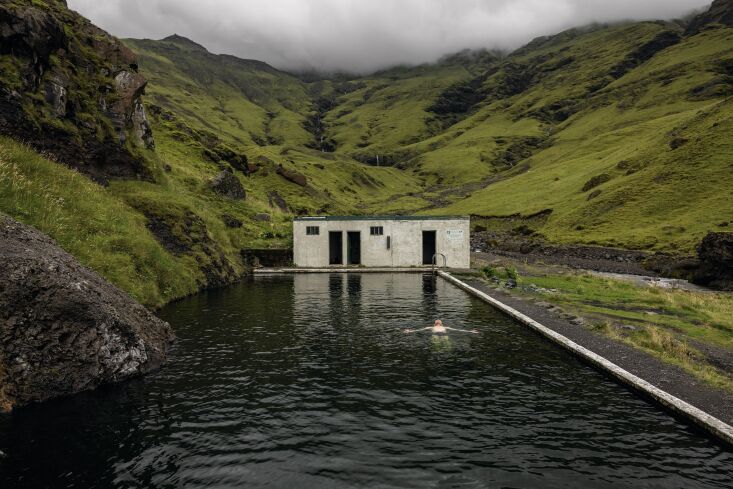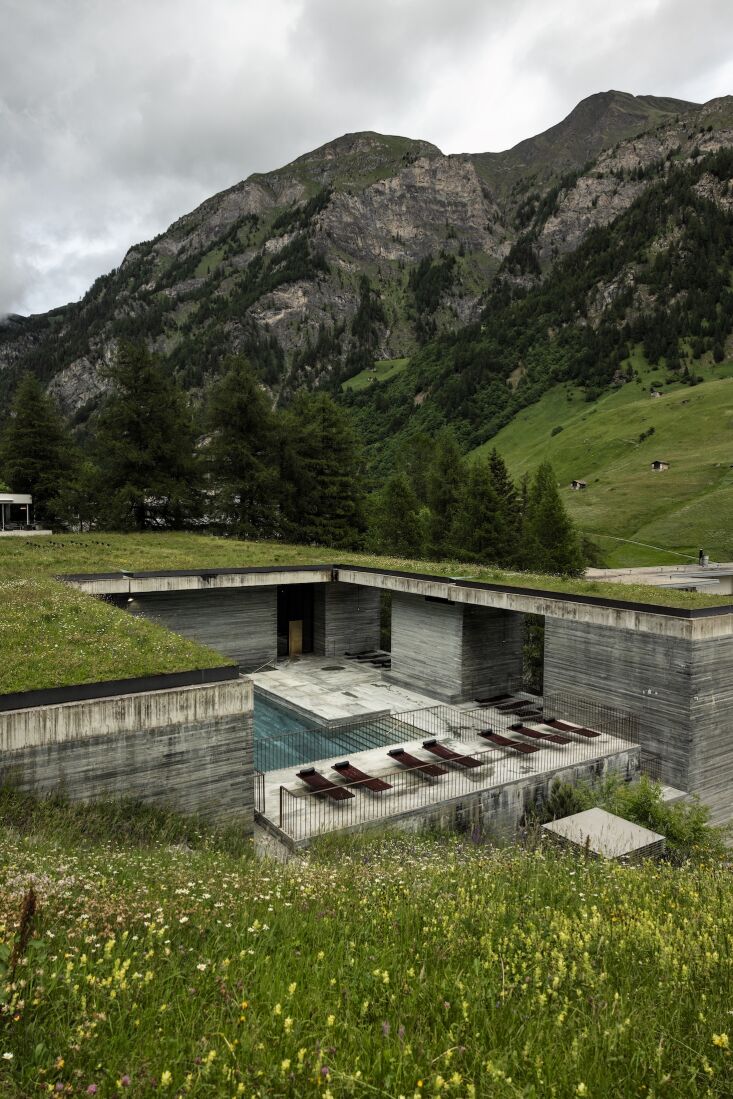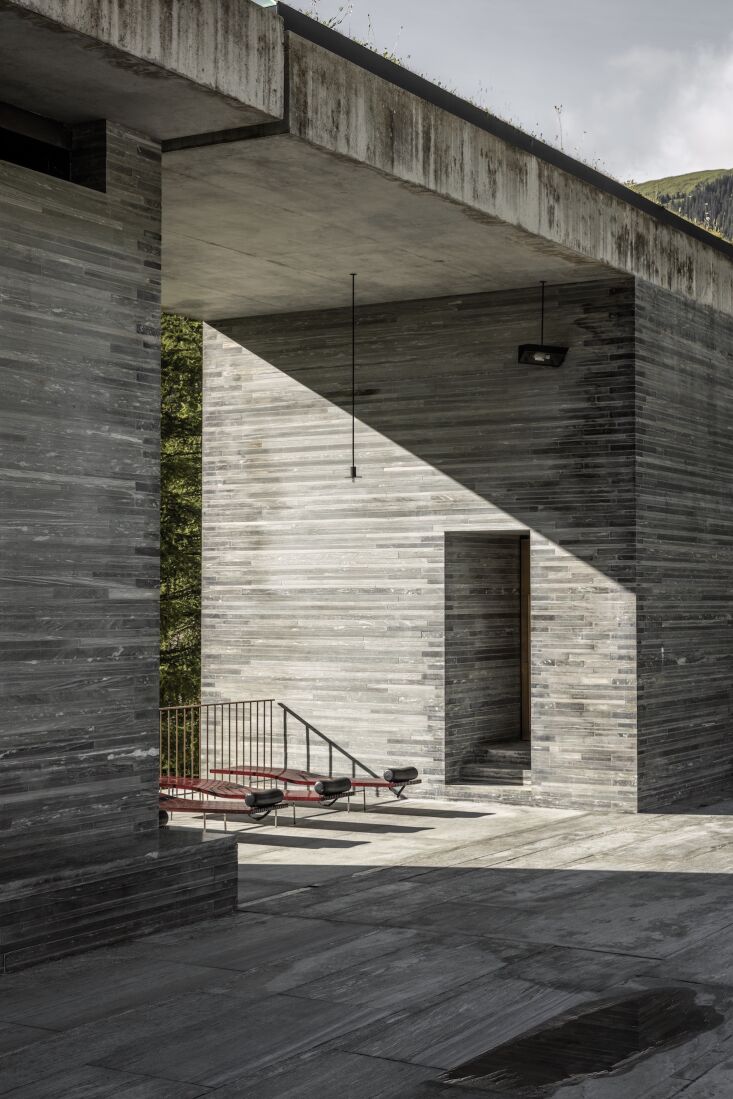While we were working on our book Remodelista in Maine with the photojournalist Greta Rybus, Greta let us in on a project she was working on: a book documenting hot springs, public baths, and soaking spots the world over. We’ve been awaiting the publication of Hot Springs ever since, and as of this month it’s officially out in the world—researched, written, and photographed by Greta, who traveled to five continents and thirteen countries, from Iceland to Bolivia, Turkey to Japan, Alaska to Hungary, to make it.
Some hot springs, Greta writes in the book’s introduction, “feel like a party, others like a prayer,” but each offers the opportunity to be present, to be in community, and to reconnect with our place in nature. (One of Greta’s notes on soaking ethics at some of the wilder locations: “Remember that you are the caretaker for that moment.”)
To celebrate the book’s launch, we’re sharing a glimpse inside Hot Springs (which, rich in blues and greens, feels as serene and all-consuming as a soak, even when you’re on dry land), plus a Q+A with Greta.
Photography from Hot Springs: Photos and Stories of How the World Soaks, Swims, and Slows Down by Greta Rybus, courtesy of Ten Speed Press.

Remodelista: What’s your first hot spring memory?
Greta Rybus: Growing up in Idaho, hot springs were a really big part of my childhood. Idaho has many different type of geothermal pools: from wild ones in riverbanks to ones that look like swimming pools. I have two distinct memories of being in large hot pools with my arms in water wings. I can remember the smell of the sulfur and that plasticky smell of the water wings and their slight pinch on my arms.

RM: How many hot springs did you visit while making the book?
GR: I lost count! I went through my notes and files last week and counted between sixty to seventy hot springs, depending on how I was to make that tally. There are 23 chapters in the book, divided by location. But some feature individual hot springs, and others explore entire regions with many hot pools or baths. There are thirteen countries represented across five continents. I tried hard to represent the diversity of thermal places: the hues of the water, the cultural connections, their roles in cities and remote places, how they are cared for and managed by so many, the different ways people experience them.

RM: What’s the furthest you traveled while making the book?
GR: The travel! It’s hard to answer this question because so many of the locations required a commitment to traveling a distance. Perhaps India or Japan would be geographically the furthest, with likely the largest gap in terms of common language and culture. In both of those places, I had helpers when I could, local people who were able to provide context to our experiences or translate conversations.
Riemvasmaak, in South Africa, is on the border of Namibia, so it took a fifteen-hour flight and nine hours of driving to get there. I remember I set out at dawn, to give myself enough time to get out of the city and head northward, but I also had to teach myself to drive on the left-hand side of the road. I was so nervous, but I did it. I set out, eventually feeling confident, only to feel rattled by the roughness of the first roads and the occasional intense presence of baboons showing up on the roadside. My first night at Riemvasmaak, I hit a rock wrong and my tire was shredded. I had to figure out how to change the tire and go back to town the next morning for a replacement.
I was safe and I felt capable, but much of the experience of making the book was figuring out how to get where I needed to go and how to problem-solve the inevitable challenges of travel. The wonderful thing was that I was met with kindness wherever I went. And, along the way, I got to rest in thermal springs.

RM: The hot spring you want to return to?
GR: All of them! I love being in hot water, and I savored the experience of being in so many different types of water in such a variety of settings. I would return to any of them to relive the specific cultural or natural landscape of each place.
I personally crave very, very hot water. I want my skin to be red; I want my head to feel like a balloon and for my body to pulsate. My favorite hot springs are the ones that make me feel totally renewed by the heat. I didn’t find that everywhere, but I remember clearly feeling it at Vashisht in India, Gellert in Budapest, the internal red pool in Therme Vals in Switzerland, and at Grettislaug in Iceland.

RM: Any tips for cultivating a hot spring experience for those who don’t have one nearby?
GR: I actually think all you need is hot water, right from your tap. I bathe at home almost every day. I don’t have a fancy tub or use any special salts or potions.
But I think there are some delightful ways to make a bath feel special. One time, years ago, I was on a little island in Japan, staying with two elders in their farmhouse. After dinner, they told me they’d prepared a wood-fired bath for me. Inside the tub, they’d nestled a little mesh bag full of herbs from their garden and yuzu peels. They’d essentially made a tea for me to soak in! I’ve become really intrigued by the idea of making a “bath tea.” It’s something I hope to explore more. I know a lot of people also love magnesium baths with things like epsom salts, or you can now buy powders made from the minerals in Japanese onsens, like Onsen Saru or Yunohana Onsen Powder.
I also have noticed a rise in saunas and hot bath places as alternative gathering spaces. Here in Maine we have Washington Baths and Cedar Grove Sauna, which I think are such delightful additions. I hope to see more spaces opening up like that.


For more of Greta’s work, see our book Remodelista in Maine, plus:
- 16 Ideas to Steal from Iceland (and Icelandic Turf Houses)
- “Silly, Thrifty, and Not Too Serious”: Architects Maria Berman and Brad Horn at Home in Harlem
For more on water therapy, see:
- Hardscaping 101: Natural Swimming Pools
- 10 Easy Pieces: Wood-Burning Hot Tubs
- Greatest Hits 2023: All About Japanese Ofuro Soaking Tubs
N.B.: This post was first published on Remodelista on March 26, 2024.
Frequently asked questions
What was Greta Rybus' first hot spring memory?
Growing up in Idaho, Greta Rybus has two distinct memories of being in large hot pools with water wings, where she remembers the smell of sulfur and the plasticky smell of the water wings.
How many hot springs did Greta Rybus visit while making the book?
Greta Rybus visited between sixty to seventy hot springs, depending on how the tally was made. The book features 23 chapters divided by location, with thirteen countries represented across five continents.
What was the furthest location Greta Rybus traveled to while making the book?
The furthest locations Greta Rybus traveled to while making the book were likely India or Japan, with significant geographical and cultural gaps. In places like India and Japan, she had local helpers providing context and translation.
Which hot spring does Greta Rybus want to return to?
Greta Rybus states that she would return to all of the hot springs, as she loved experiencing different types of water in various settings. Her personal preference is for very hot water that makes her feel renewed.
Any tips for cultivating a hot spring experience for those who don't have one nearby?
Greta Rybus suggests that all you need is hot water from your tap to recreate a hot spring experience at home. She also mentions the idea of creating a 'bath tea' using herbs and peels. Additionally, she recommends magnesium baths or mineral powders inspired by Japanese onsens for a similar experience.











Have a Question or Comment About This Post?
Join the conversation